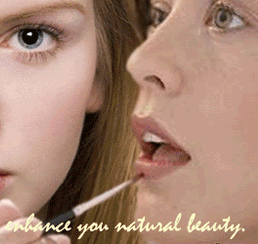


   |
|
Rosacea - Causes, Symptoms And Home Remedies For The Treatment of RosaceaWhat is rosacea?Rosacea is a chronic skin disorder that most ofen affects the forehead, nose, cheekbones and chin. Groups of capillaries close to the surface of the skin become dilated, resulting in blotchy red areas with small bumps and, sometimes, pimples. The redness can come and go, but eventually may become permanent if blood vessels under the skin become dilated, a phenomenon known as telangiectasia. The skin tissue can swell and thicken, and may be tender and sensitive to the touch. The inflammation of rosacea can look a great deal like acne, but it tends to be more chronic, blackheads and whiteheads are almost never present. It is a fairly common disorder-about one in every twenty Americans has it to some degree-but many never realize they have it. Rosacea usually begins with frequent flushing of the face, particularly the nose and cheeks. The flushing is caused by the swelling of the blood vessels under the skin. This "red mask" can serve as a flag for attention. Inflammation can then spread across the face and small bumps may appear. Later, swelling of the nose may occur. However, it can take years from the beginnings of this condition before the later stages develop. Rosacea can also cause a persistent burning and feeling of grittiness in the eyes or inflamed and swollen eyelids. In severe cases, vision can be impaired. Causes of rosaceaThe underlying cause or causes of rosacea are not understood, but certain factors are known to aggravate the condition, including the consumption of alcohol, hot liquids, or spicy foods; exposure to sunlight; humidity; extremes of temperature; and the use of makeup and skin care products containing alcohol. Stress, vitamin deficiencies and infection can be contributing factors. The things that aggravate one person's rosacea may have no effect on another person. Symptoms of rosaceaRosacea is most common in white women between the ages of thirty and fifty. When it does occur in men, rosacea tends to be more severe, and is usually accompanied by rhinphyma (a nose that becomes chronically red and enlarged. Fair-skinned individuals seem to be more susceptible to in this condition than darker skinned people. People who flush easily seem to be more prone than others to develop rosacea. In rare cases, rosacea may affect the skin in other parts of the body as well as the face. It is not a dangerous condition, but it is chronic and can be distressing for cosmetic reasons. Without proper care, it can develop into a disfiguring condition. Home remedies for the treatment of rosacea
Prevention tips for rosacea
|
|
|
|
Cosmetics Home || Beauty Articles || Gynaecological Problems || Contact Us || Body Tattoos || Stretch Marks|| Celebrities || Plastic Surgery || HGH || Resveratrol Reviews ||
(c)Copyright Bestincosmetics.com All rights reserved.